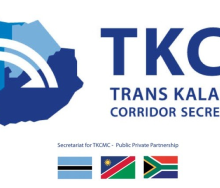The emergence of Covid-19 has made the need for digitising payments more critical than ever before.
According to PayPugs, a digital banking service provider that aims to bank the underbanked and provides services in different currencies and countries, pre-Covid predictions of a rise in digital payments are now out of date, with substantially more people opting for cashless or contactless payments than was expected.
PayPugs argues that this has been fuelled by the stay-home requirements in many countries and the public distrust about sanitation measures used by banks on actual notes.
They point out that according to Visa’s Back to Business Study 2021 Outlook: Global Small Business and Consumer Insights, 78% of global consumers have adjusted the way they pay for items in the wake of the pandemic’s impact on people across the globe.
“This increase of digital payment systems, including peer-to-peer payments, mobile wallets, mobile point-of-sale (POS) devices and digital coins, has meant transparency, efficiency and convenience for both the business and private sectors,” the digital banking provider said.
According to PayPugs, the digital payments market is forecast to grow at a compound annual growth rate of 13.7% between 2021 and 2026, and payments made via mobile devices alone are expected to exceed $2 trillion globally by 2023.
“The fintech market has led the charge by stepping up its offerings to SMEs and private individuals, particularly those that are operating in cross-border businesses that require good forex rates coupled with speed of transactions,” PayPugs said.
They also emphasise that high smartphone penetration across society has played a significant role in the evolution of mobile payments and, as the cost of these devices comes down, it makes it affordable.
A Forbes report underscores PayPugs’ assertions:
“The central banks of both China and France are working on a digital yuan and euro respectively, the US has been discussing a digital dollar for quite some time, and Sweden has run an e-krona pilot project, which is now ready to go into the next testing phase, using blockchain technology called Distributed Ledger Technology.”
A survey in January 2021 by the Bank for International Settlements said central banks representing one-fifth of the world’s population were likely to issue their own digital currencies in the next three years.
PayPugs points out, however, that digital transformation needs appropriate government and international policies, significant technology penetration, and a wider spread of banking services.













